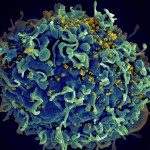Maria Teresa CATANESE, PhD.
King’s College London, School of Medicine
Department of Infectious Diseases
STRUCTURE AND COMPOSITION OF HEPATITIS C VIRUS : NOVEL INSIGHTS INTO VIRUS-HOST INTERACTIONS REQUIRED FOR PROPAGATION OF INFECTION.
SEMINAR HELD ON JUNE 21st, 2016 at 12:00pm – Jacques Monod Amphitheater
Institut Pasteur – 25, 28, rue du Dr. Roux – 75724 PARIS CEDEX 15
Invited by : Eliane Meurs (eliane.meurs@pasteur.fr)
Abstract :
Hepatitis C virus (HCV) is a unique enveloped virus that assembles as a hybrid lipo-viral particle by tightly interacting with host lipoproteins. As a result, HCV virions display a characteristic low buoyant density and a deceiving coat, with host-derived apolipoproteins masking viral epitopes.
We established new techniques for virus purification to determine the ultrastructure (Catanese et al.; PNAS 2013) and protein composition (Lussignol et al, PNAS 2016) of infectious HCV particles. Using different affinity purification protocols, we detected four viral and 46 human cellular proteins specifically co-purifying with extracellular HCV virions.
We determined the C-terminus of the mature capsid protein and reproducibly detected low levels of the viral nonstructural protein, NS3.
Functional characterization of HCV-associated host factors by RNAi identified cellular proteins with either proviral or antiviral roles, providing novel insights critical for understanding the mechanisms of virus assembly, entry and pathogenesis.


